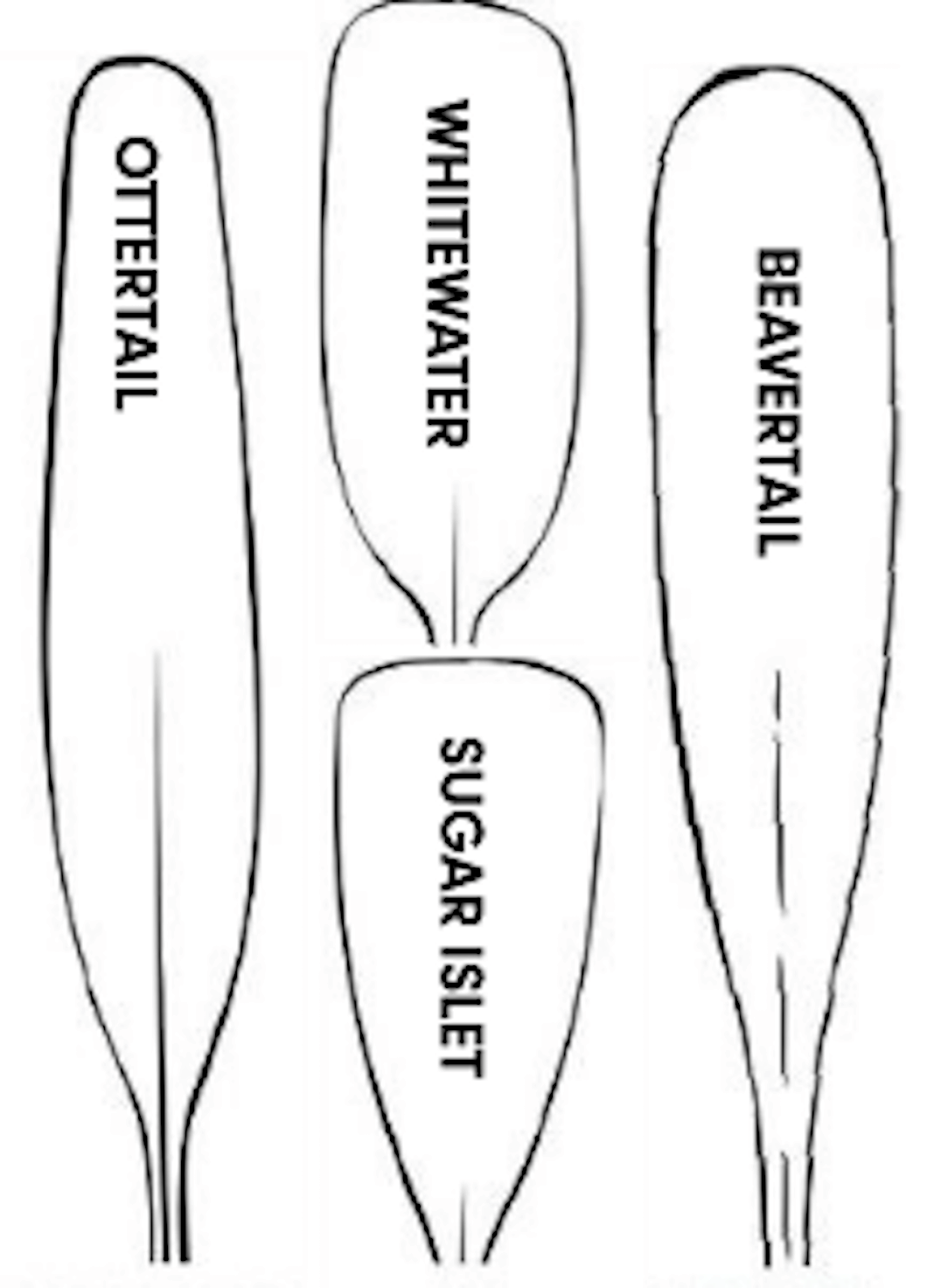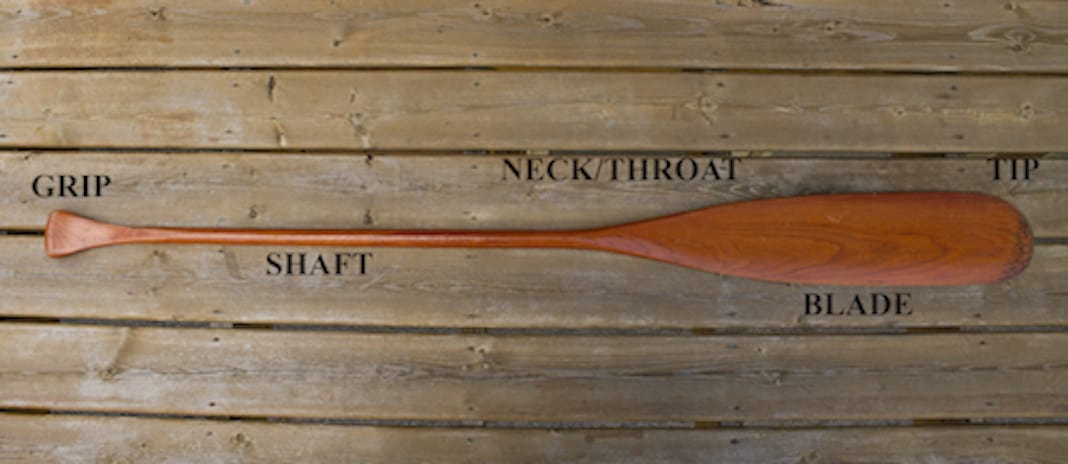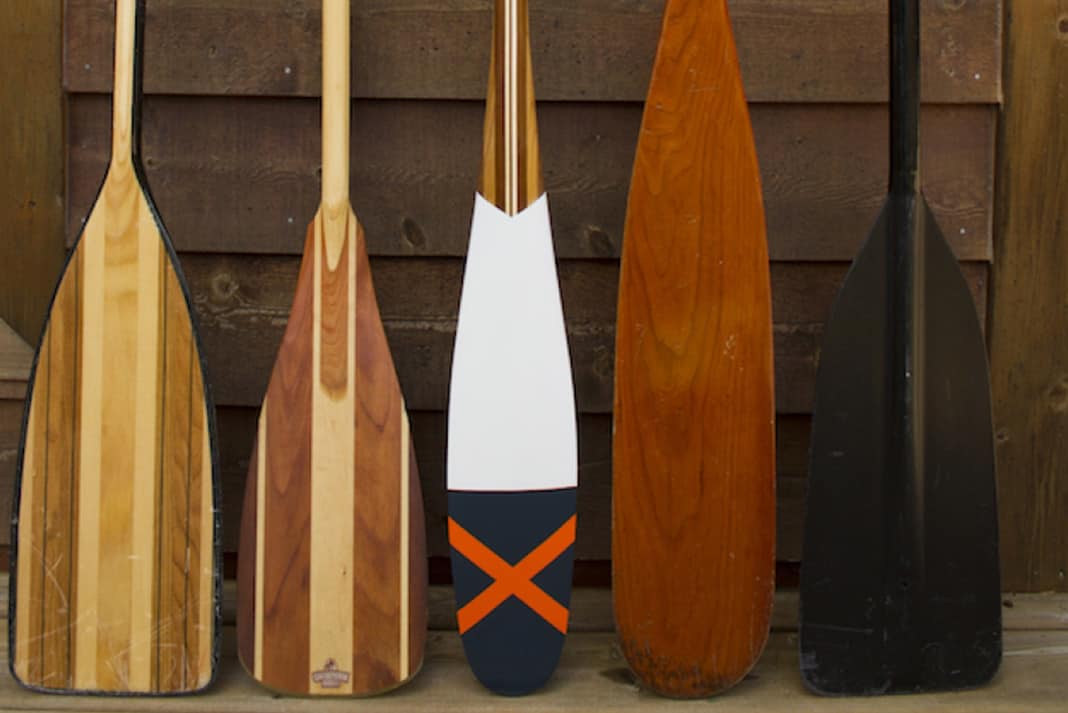Figuring out the best canoe paddle for you is about understanding different designs and materials, but also about how the paddle actually feels as you move through the water.
Before you buy a new paddle you should first demo several and try your friends’ blades. Most paddles work for most people, however, the gains afforded to the perfect match can be significant. “I ask customers, ‘Do you want speed, muscle or value?’” says Andrew Stern, marketing manager at Bending Branches. “Speed means a lightweight paddle for going fast and covering long distances. Muscle means a durable paddle for rocky rivers and shallow waters. Value means the price is most important. The more you spend on a paddle, the lighter or stronger the paddle is.”
This guide on how to pick a canoe paddle will help you buy the paddle that works best for you. The first thing you should do to jump-start your search is determine what kind of paddling you will be doing most often.
Just like canoes, there’s no one blade that is perfect for every type of on-water condition you might encounter. Paddle construction, blade shape, and design are different based on the kinds of canoeing they are intended for.
The canoe paddle’s purpose
Flatwater and tripping paddles
If you are going to be doing most of your paddling on flatwater lakes, choose an ottertail or beavertail blade shape. The beavertail shape has a rounded blade tip and a nearly consistent width until it tapers off towards the neck.
The ottertail has a slightly less rounded blade tip and is narrower. These blade shapes hold less water on the face of the blade than wider designs, which can make for less tiring and more enjoyable paddling on extended flatwater trips.
Some paddlers on long flatwater expeditions or those focused on speed prefer a paddle with a bent shaft.
“Bent canoe paddles are more efficient than straight paddles,” says Bending Branches’ Stern. “Bent shaft paddles allow the blade to be kept vertical for a longer portion of the stroke, which is where the available power is greatest, moving more water with less effort.” The trade-off is that maneuvering strokes tend to be awkward with bent-shaft paddles.

Whitewater canoe paddles
Paddles intended for whitewater have blades that are shorter and wider with square blade tips. This design makes it easier for whitewater paddlers to make quick strokes and last-minute maneuvers like draws or pries. A straight shaft is essential for a whitewater canoe paddle as it makes key techniques like a brace much easier.
Many whitewater paddles will have a curved blade, a design feature that helps the blade grip the water better upon contact. Some paddlers on trips with both whitewater and flatwater will bring a paddle suited for each.
Solo canoe paddles
For those paddling solo, a paddle with a longer and narrower blade and a shorter shaft gives more control and precision in the water.
The long blade is designed to remain in the water, with the paddler recovering underwater instead of in the air.
Racing canoe paddles
Racing canoe paddles often have a shorter and wider blade, like the Sugar Islet pictured. This blade face catches more water and its stout stature allows for paddling at a faster cadence.
Many racing and performance paddlers will also have shafts that are bent, increasing forward power and efficiency for every stroke.

Canoe paddle grips
The two common grip shapes on a paddle are a classic palm grip and a T-grip. A palm grip is shaped like a teardrop and fits nicely into the paddler’s hand, making it the go-to choice for long flatwater trips and recreational paddling.
The T-grip has a longer horizontal section the paddler can wrap their hands around, making it less comfortable but allowing a lot more precision and control. You will usually see the T-grip on whitewater paddles, and the palm grip on flatwater ones.
The diameter of the shaft
The diameter of the paddle shaft will either be round or oval. Oval shafts can be much more comfortable to hold onto while paddling, but some round shafts will have “oval indexing,” which is when a section of the shaft is oval-shaped to provide a better grip.

Canoe paddle materials
Wooden canoe paddles
This classic paddle material is beautiful, feels good in the hands and is warm to touch in chilly weather. Wood canoe paddles are typically the choice of lakewater paddlers. Wood paddles do require some maintenance over time, such as occasional sanding and varnishing to keep moisture and rot at bay.
Not all kinds of wood are the same. Ash is a very durable wood that is a great choice for tripping as it can stand up to more rough conditions. Maple is also quite strong but also flexible. Cherry is a popular wood for canoe paddles because it is durable and quite light, making it a popular choice for wood paddles.
Walnut is quite stiff and on the heavier side, and can also be more expensive. Some paddles will come with a fibreglass tip; this can be a good choice if you are going to be paddling consistently in shallow or rocky waterways and want some impact protection.
Some wooden canoe paddles are made from not just one but a number of different types of wood laminated together. You can tell if a wooden paddle is laminated because there will be different colours or shades of wood side by side.
Composite materials
Aramid, fibreglass and carbon canoe paddles
Canoe paddles made of composite materials like carbon, aramid and fibreglass are extremely light and strong. These paddles don’t require the maintenance wooden paddles do.
Carbon canoe paddles are the choice of racers, and depending on the ratio of carbon to other fibres in the paddle, the price will vary. The higher the amount of carbon in the paddle, the more expensive it will tend to be. Composite paddles are stiff and have less flex than some types of wooden paddles.
Aluminum and plastic canoe paddles
Most plastic canoe paddles you will find have a plastic blade and an aluminum handle. Plastic paddles are durable and don’t require maintenance. It can be somewhat less enjoyable to grip the aluminum shaft as opposed to a wooden one on a cold day.
They are heavier and can be less efficient and complex in design than other paddle types, but can be good as an extra on a long trip or the odd canoe outing at the cottage.
How to size a canoe paddle
Maybe you have found a canoe paddle that is perfect for the kind of canoeing you want to do. If it isn’t the right size for you however, the fact that its beautiful wood finish makes your heart skip a beat is irrelevant.
A paddle that is too small or large is uncomfortable and inefficient on the water and may result in you not using it very often. Here are a few of our tried and true methods for making sure your canoe paddle is the correct size for you.
The ideal paddle size for you will vary based on the canoe you are in and how you sit in it. It is best if you can actually get on the water in your canoe to see exactly how the paddle feels, but if that isn’t an option we have some sizing methods for you too.
1 If you are in the store, kneel on the ground and hold the paddle by its neck with the grip touching the floor in front of you. If the paddle is the correct size for you, your arm should be horizontal.
2
Sit in your canoe seat with your feet on the floor and take note of the distance between the water and your nose. This distance should be equal to the length between the grip of the paddle and the paddle’s neck.
3
Paddling Magazine’s Publisher Scott MacGregor recommends the precise method of paddling in your canoe on the water with a broomstick. Paddle normally and the section of the shaft that stays dry is equal to the right shaft length for you in that particular canoe. MacGregor likes this method because it takes into consideration the position of your hands, the height of the canoe seat, the depth of the canoe and how you paddle. After using this method you will just need to figure out the length of blade you want.
4
If you don’t yet have a paddle or a canoe at your disposal, you can sit in a chair and determine the distance from the chair to the top of your eyebrows to find out a suitable shaft length for you.
Extra tips about your paddle
Store your canoe paddle properly
You can find lots of resources online for building your own simple paddle rack or holder, or you can just place it flat somewhere in your house or garage. Keep it out of the sun and store it in a dry place over the winter where moisture won’t find it’s way into the wood. Remember that storing your canoe is just as important as storing your paddle.
Pack an extra
Whether it’s forgetting your paddle in the bushes at a portage or having it wash away during the night when the water level changes, it’s not hard to lose your blade.
If you are going on any kind of extended canoe trip, pack an extra just in case. It will make you much happier, as well as your friends who won’t have to paddle-chauffeur you around.
Make use of hockey socks for wooden paddles
On a canoe trip, slip a hockey sock over your paddle blade on portages or at the campsite. This is an easy way to protect your wooden canoe paddle and can help maintain the beautiful aesthetic of it. Many people have their canoe paddles for decades if they are well taken care of. Don’t make your decision solely based on price. A well-made paddle that fits your canoeing needs and feels great to use is worth paying for.
Paddles of different shapes and styles, which one is for you? | Photo: Hannah Griffin




